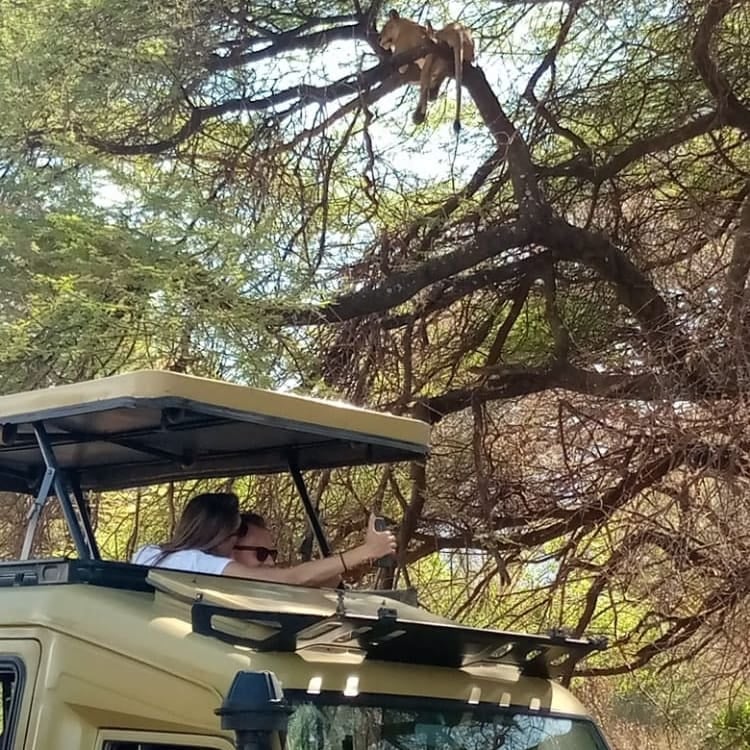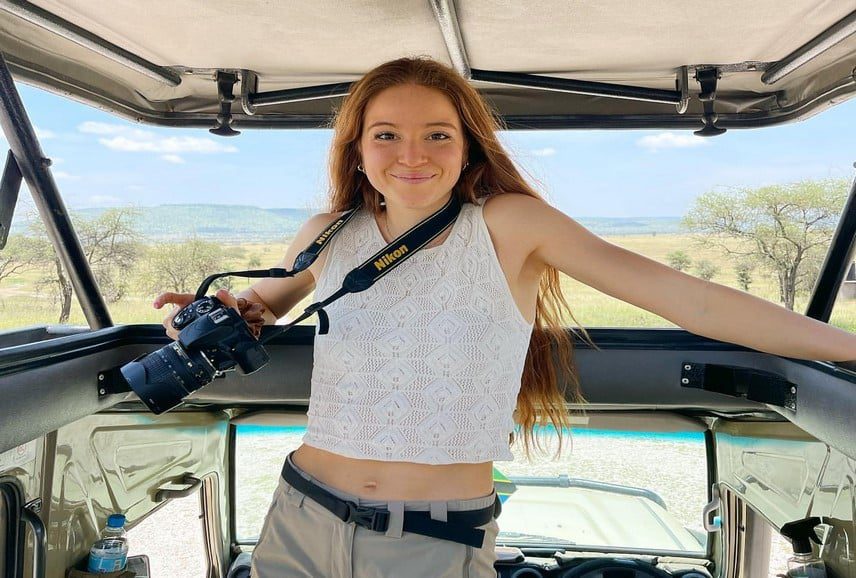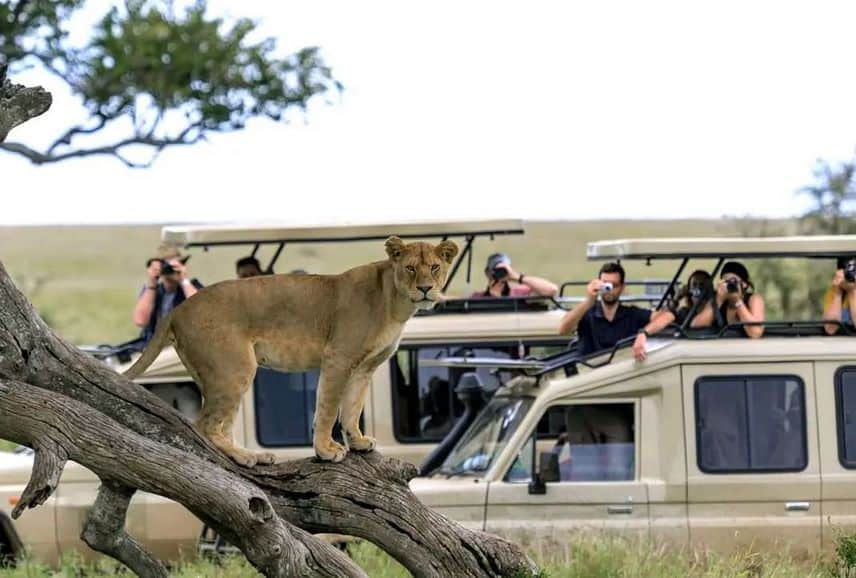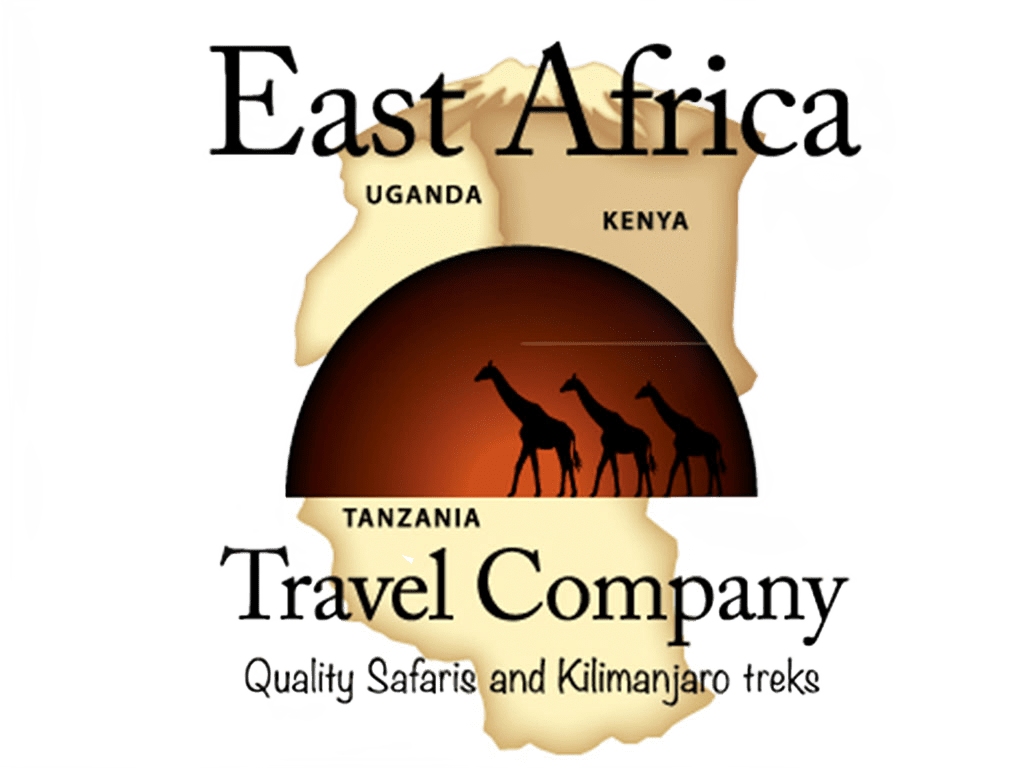Africa Tours and Safaris Tanzania offers an unforgettable journey through the heart of Tanzania’s breathtaking wilderness, unveiling the six most stunning wildlife spots the country has to offer.



Africa Tours and Safaris
Introduction
Overview of Tanzania as a Safari Destination
Africa Tours and Safaris Tanzania, an East African gem, stands as one of the most sought-after safari destinations in the world. Known for its stunning landscapes, abundant wildlife, and rich cultural heritage, Tanzania offers an unparalleled adventure for nature lovers and wildlife enthusiasts. The country’s vast national parks and game reserves are home to some of the most iconic and diverse wildlife species, making it a premier destination for unforgettable safari experiences.
Importance of Tanzania’s Wildlife in Global Tourism
Africa Tours and Safaris: Tanzania’s wildlife plays a crucial role in the global tourism industry, attracting millions of visitors each year. The country’s commitment to wildlife conservation and sustainable tourism ensures that these natural treasures are preserved for future generations. Tanzania’s national parks and game reserves not only provide habitats for a wide array of species but also contribute significantly to the local economy through tourism revenue.
Scope of the Article: Unveiling the Top 6 Wildlife Spots
In this article, we will explore the top six most stunning wildlife spots in Tanzania. From the world-famous Serengeti National Park to the remote wilderness of Ruaha National Park, each destination offers unique and awe-inspiring experiences. Whether you’re planning your first safari or looking to expand your travel horizons, this guide will help you uncover the best wildlife viewing opportunities in Tanzania.
Geographical Information
Location and Borders of Tanzania
Africa Tours and Safaris: Tanzania is located in East Africa, bordered by Kenya and Uganda to the north, Rwanda, Burundi, and the Democratic Republic of Congo to the west, Zambia, Malawi, and Mozambique to the south, and the Indian Ocean to the east. This strategic location provides Tanzania with a diverse range of ecosystems, from coastal areas to mountainous regions and expansive savannas.
Climate Variations Across the Regions
The climate in Tanzania varies significantly depending on the region and altitude. Coastal areas experience tropical climates with high humidity and temperatures, while the interior regions have a more temperate climate. The highland areas, including the Serengeti and Ngorongoro, can be cooler, especially during the early mornings and evenings. The country experiences two main rainy seasons: the long rains from March to May and the short rains in November and December.
Best Times to Visit for Wildlife Viewing
Africa Tours and Safaris: The best time to visit Tanzania for wildlife viewing is during the dry season, which runs from late June to October. During this period, the vegetation is sparse, and animals congregate around water sources, making it easier to spot them. The dry season also coincides with the Great Migration in the Serengeti, offering one of the most spectacular wildlife spectacles in the world. The shoulder months of January and February are also good for visiting, as they provide excellent wildlife viewing with fewer crowds.
Cultural Insights
Overview of Tanzanian Culture
Africa Tours and Safaris: Tanzania’s culture is a rich tapestry woven from the influences of over 120 ethnic groups. This diversity is reflected in the country’s languages, traditions, and social practices. Tanzanian culture places a strong emphasis on community and family values, and this is evident in the warm hospitality extended to visitors. Traditional music, dance, and art play a significant role in daily life and cultural celebrations.
The Role of Wildlife in Tanzanian Traditions
Africa Tours and Safaris: Wildlife holds a special place in Tanzanian culture and traditions. Many ethnic groups, such as the Maasai, have a deep spiritual connection to the land and its animals. Wildlife is often featured in traditional stories, rituals, and art. Conservation efforts are deeply intertwined with cultural practices, as communities recognize the importance of preserving these natural resources for future generations.
Languages Spoken and Local Customs
Swahili is the official language of Tanzania and is widely spoken across the country. English is also commonly used, especially in urban areas and within the tourism industry. Learning a few basic Swahili phrases can enhance your travel experience and interactions with locals. When visiting Tanzania, it’s important to respect local customs and traditions, such as dressing modestly, especially in rural areas, and asking for permission before taking photographs of people.
Must-Visit Attractions
Serengeti National Park
Overview and Significance
Africa Tours and Safaris: The Serengeti National Park is one of the most famous and iconic safari destinations in the world. Covering an area of over 14,750 square kilometers, it is renowned for its vast savannas, diverse wildlife, and the annual Great Migration. This UNESCO World Heritage Site is home to the Big Five (lion, leopard, elephant, rhinoceros, and Cape buffalo) and countless other species, making it a must-visit for any safari enthusiast.
Best Time to Visit
The best time to visit the Serengeti is during the dry season, from June to October, when the wildlife viewing is at its peak. This period coincides with the Great Migration, where millions of wildebeest, zebras, and gazelles move across the plains in search of fresh grazing grounds. Witnessing this natural phenomenon is a highlight of any Serengeti safari.
Major Wildlife Sightings
The Serengeti offers incredible wildlife sightings year-round. In addition to the Big Five, visitors can expect to see cheetahs, hyenas, giraffes, hippos, and a variety of antelope species. Bird enthusiasts will be delighted by the over 500 bird species that inhabit the park, including ostriches, eagles, and flamingos.
Ngorongoro Crater
Geological Importance
Africa Tours and Safaris: The Ngorongoro Crater, formed by a collapsed volcano, is the world’s largest inactive volcanic caldera. This geological marvel spans 260 square kilometers and provides a unique habitat for a dense population of wildlife. The crater’s floor is a mix of grasslands, swamps, and forests, creating a diverse ecosystem that supports a wide range of species.
Wildlife Diversity
The Ngorongoro Crater is home to one of the highest concentrations of wildlife in Africa. Visitors can expect to see lions, elephants, black rhinos, and an abundance of plains game such as wildebeest, zebras, and gazelles. The crater’s lakes and swamps are also teeming with hippos and flamingos.
Visiting Tips
To make the most of your visit to the Ngorongoro Crater, plan to arrive early in the morning when the wildlife is most active. The crater can get crowded, especially during peak tourist season, so booking a guided tour in advance is recommended. Remember to bring warm clothing, as temperatures can be quite cool in the early mornings and evenings.
Tarangire National Park
Unique Features
Tarangire National Park is known for its diverse landscapes, which include swamps, savannas, and baobab-studded hills. The park is named after the Tarangire River, which serves as a vital water source for the wildlife during the dry season. This lesser-known gem offers a more secluded safari experience compared to some of the more popular parks.
Best Wildlife Viewing Times
The best time to visit Tarangire is during the dry season, from June to October, when the wildlife congregates around the river and waterholes. This period offers excellent opportunities to see large herds of elephants, as well as lions, leopards, and a variety of bird species.
Activities Available
In addition to game drives, Tarangire offers unique activities such as walking safaris and night drives. These experiences provide a different perspective on the park’s wildlife and landscapes. Bird watchers will also appreciate the park’s rich avian diversity, with over 550 species recorded.
Selous Game Reserve
Overview and Size
The Selous Game Reserve is one of the largest protected areas in Africa, covering over 50,000 square kilometers. This UNESCO World Heritage Site is renowned for its remote and untouched wilderness, offering a truly wild safari experience. The reserve’s varied landscapes include rivers, lakes, and dense woodlands.
Key Wildlife Species
Selous is home to a wide range of wildlife, including African wild dogs, elephants, hippos, and crocodiles. The reserve also boasts a significant population of lions, leopards, and giraffes. Its rivers and lakes attract large numbers of birds, making it a paradise for bird watchers.
Safari Experience
Visitors to Selous can enjoy a variety of safari activities, including boat safaris on the Rufiji River, walking safaris, and traditional game drives. The reserve’s remote location means fewer tourists, allowing for a more intimate and exclusive wildlife experience.
Lake Manyara National Park
Unique Ecosystem
Lake Manyara National Park is known for its dramatic scenery, which includes a soda lake, dense woodlands, and towering cliffs. The park’s varied habitats support a diverse array of wildlife, making it a popular stop on the northern safari circuit.
Flamingos and Tree-Climbing Lions
Lake Manyara is famous for its large flocks of flamingos, which create a striking pink hue along the lake’s shores. The park is also known for its tree-climbing lions, a rare behavior not commonly seen in other parks. Visitors can also expect to see elephants, giraffes, and a variety of bird species.
Best Time to Visit
The best time to visit Lake Manyara is during the dry season, from July to October, when the wildlife is more concentrated around the water sources. However, the park can be visited year-round, with each season offering different wildlife viewing opportunities.
Ruaha National Park
Remote and Untouched Wilderness
Ruaha National Park is Tanzania’s largest national park, covering an area of over 20,000 square kilometers. Despite its size, Ruaha remains one of the country’s best-kept secrets, offering a remote and untouched safari experience. The park’s rugged landscapes and diverse habitats are home to a wide variety of wildlife.
Wildlife Highlights
Ruaha boasts large populations of elephants, lions, and leopards, as well as rare species such as the African wild dog and greater kudu. The park’s rivers attract hippos and crocodiles, while its plains are inhabited by giraffes, zebras, and antelopes. Bird watchers will be delighted by the over 570 bird species recorded in the park.
Visiting Logistics
Ruaha’s remote location means that it is less visited than other parks, providing a more exclusive and tranquil safari experience. The park is best accessed by charter flights from Dar es Salaam or Arusha. Visitors should plan to stay for several days to fully explore Ruaha’s diverse landscapes and wildlife.
Activities and Experiences
Game Drives
Game drives are the quintessential safari activity, offering the chance to see wildlife up close from the comfort of a safari vehicle. Most parks and reserves in Tanzania offer guided game drives, led by experienced guides who can provide insights into the behavior and ecology of the animals.
Walking Safaris
Walking safaris offer a more intimate and immersive way to experience the African bush. Accompanied by armed rangers and knowledgeable guides, visitors can explore the wilderness on foot, gaining a deeper understanding of the smaller details of the ecosystem, from tracks and signs to plants and insects.
Hot Air Balloon Safaris
Hot air balloon safaris provide a unique and breathtaking perspective on the landscape and wildlife. Floating silently above the plains, visitors can witness the sunrise over the savanna and see herds of animals from a bird’s-eye view. This experience is particularly popular in the Serengeti and Tarangire National Parks.
Night Safaris
Night safaris offer the chance to see nocturnal wildlife that is rarely active during the day. Using spotlights to illuminate the darkness, guides can reveal the hidden world of predators on the hunt, as well as nocturnal species such as bush babies, aardvarks, and owls.
Bird Watching
Tanzania is a paradise for bird watchers, with over 1,000 species recorded in the country. From the flamingos of Lake Manyara to the raptors of the Serengeti, bird enthusiasts will find endless opportunities to observe and photograph a diverse array of avian life.
Cultural Tours with Local Tribes
Cultural tours provide a fascinating insight into the traditional lifestyles of Tanzania’s indigenous peoples. Visitors can spend time with the Maasai, Hadzabe, or Datoga tribes, learning about their customs, crafts, and daily routines. These interactions offer a deeper appreciation of the cultural richness of Tanzania.
Travel Tips
Choosing the Right Safari Package
When selecting a safari package, consider factors such as budget, duration, and the type of experience you seek. Research different tour operators and read reviews to ensure you choose a reputable company. Look for packages that include knowledgeable guides, comfortable accommodations, and comprehensive itineraries.
Accommodation Options
Luxury Lodges
Luxury lodges offer high-end amenities and services, providing a comfortable and opulent base for your safari. These lodges often feature spacious suites, gourmet dining, and stunning views of the surrounding landscapes.
Tented Camps
Tented camps provide a more rustic and immersive safari experience. These camps typically consist of large, comfortable tents with en-suite bathrooms and often include communal dining and lounge areas. Tented camps offer a closer connection to nature while still providing essential comforts.
Budget Options
For those traveling on a budget, there are a variety of affordable accommodation options, including basic campsites and budget lodges. These options may lack some of the luxuries of higher-end accommodations but still provide a comfortable and safe base for your safari adventure.
Transportation Within Tanzania
Tanzania has a well-developed network of domestic flights, which are often the most convenient way to travel between major safari destinations. Road transfers are also common, especially for shorter distances. When planning your trip, consider the logistics of getting from one park to another and factor in travel time.
Packing Essentials for a Safari
Packing for a safari requires careful consideration of both comfort and practicality. Essential items include lightweight and breathable clothing, a wide-brimmed hat, sunglasses, sunscreen, insect repellent, binoculars, and a good camera. It’s also important to pack layers, as temperatures can vary significantly throughout the day.
Photography Tips for Capturing Wildlife
To capture stunning wildlife photos, invest in a good camera with a telephoto lens. Practice using your equipment before the trip to familiarize yourself with its settings and capabilities. Be patient and ready to take advantage of unexpected moments, and always respect the animals’ space and behavior.
Safety and Health Precautions
Vaccinations and Health Checks
Before traveling to Tanzania, ensure that you are up to date on routine vaccinations and consider additional vaccines such as hepatitis A, typhoid, and yellow fever. Consult with a travel health specialist to determine the necessary precautions for your specific itinerary.
Safety Tips for Wildlife Encounters
Always follow the guidance of your safari guide when encountering wildlife. Keep a safe distance from animals, remain quiet, and avoid sudden movements. Never attempt to feed or touch the wildlife, and always stay inside the vehicle during game drives.
Travel Insurance Recommendations
Comprehensive travel insurance is essential for any safari trip. Look for policies that cover medical expenses, emergency evacuation, trip cancellation, and lost luggage. Given the remote locations of many safari destinations, consider policies that include emergency evacuation coverage.
Budget Planning
Cost Breakdown of Safari Packages
Safari packages vary widely in cost, depending on factors such as accommodation type, duration, and included activities. A typical mid-range safari package may cost between $2000 and $5000 per person for a week-long trip. Luxury safaris can exceed $10,000, while budget options may be available for under $1500.
Tips for Saving Money
- Travel during the shoulder season to take advantage of lower rates.
- Book in advance to secure the best deals.
- Consider group travel to share costs.
- Opt for mid-range or budget accommodation.
Avoiding Hidden Costs
Read the fine print of your safari package to understand what is included. Common additional costs include park entrance fees, optional activities, tips, and beverages. Clarify these details with your tour operator to avoid surprises.
Local Cuisine
Traditional Tanzanian Dishes to Try
Tanzanian cuisine is a delightful blend of flavors, influenced by African, Indian, and Arab culinary traditions. Must-try dishes include:
- Ugali: A staple made from maize flour, often served with meat or vegetable stews.
- Nyama Choma: Grilled meat, typically goat or beef, enjoyed with a side of vegetables or chips.
- Pilau: A spiced rice dish with meat or vegetables.
- Samosas: Fried or baked pastry filled with savory ingredients.
Popular Restaurants and Eateries
Tanzania offers a range of dining options, from street food stalls to upscale restaurants. In major cities like Arusha and Dar es Salaam, you can find eateries serving both local and international cuisine. On safari, lodges and camps often provide gourmet meals prepared by skilled chefs.
Food Safety Tips
To avoid foodborne illnesses, stick to bottled water and avoid raw or undercooked foods. Eat at reputable restaurants and be cautious with street food. Wash your hands regularly and use hand sanitizer when necessary.
Conclusion
Summary of Key Points
Tanzania offers some of the most spectacular wildlife viewing opportunities in the world. From the iconic Serengeti to the remote wilderness of Ruaha, each destination provides unique experiences and unforgettable encounters with nature. Understanding the geographical, cultural, and logistical aspects of your safari will enhance your trip and ensure a safe and enjoyable adventure.
Final Travel Recommendations
Plan your safari carefully, taking into account the best times to visit, the type of wildlife you want to see, and your budget. Choose reputable tour operators and accommodations to ensure a high-quality experience. Embrace the cultural richness of Tanzania and respect local customs and wildlife. With the right preparation, your Tanzanian safari will be a once-in-a-lifetime journey that leaves you with lasting memories.
Youtube
